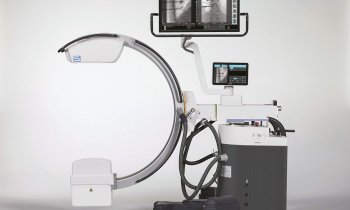How green is your hospital?
Sometimes small efforts can have a big effect. In a pilot project, a team at the University of Heidelberg is studying what are the real energy guzzlers in hospitals and what cost savings can actually be achieved by simple energy saving measures.


Mandana Banedj-Schafii Dr.-Ing., Managing Director of consulting firm Mandamehr, holds a 14-day course on healthcare facility management for students taking the Masters Degree course ‘International Health’ at the Institute of Public Health, University of Heidelberg. With sustainability close to her heart, last year the expert devoted one day to the course day ‘Green Hospital’, an initiative inspired by employees at the Institute of Public Health who wanted their own workplace to be environmentally friendlier. Initially they had reduced the amount of paper used and changed from white to recycled paper. Moreover, the introduction of multimedia conferences led to reduced travel – saving on time, costs and CO2 emissions.
Since then, Dr Banedj-Schafii has been an advisor on the energy savings project at the University and University Hospital of Heidelberg. The pilot phase will conclude shortly. The long-term objective is to extend the findings and strategies implemented for environmental and climate protection to the entire organisation.
‘The sustainability approach goes far beyond the environmental friendliness of a building,’ Dr. Banedj-Schafii points out. ‘It comprises the entire life cycle of an object. This extends from planning to design, building, use of the building and, finally, demolition and recycling. Obviously, the opportunity to participate actively in the planning phase of a ‘green’ project right from the start is not always given. Many people believe therefore that they have no leeway to create a greener working environment, because they can’t change the building shell or existing electricity contracts. However, each and every one of us can still contribute towards sustainability.’ In fact, every kilowatt hour of electricity not used means half a kilo less of climate-damaging carbon dioxide (CO2).
From the beginning, the integration of several partners was important to the project’s success. For example, to document the concrete benefit of measures from a financial aspect, the Green Institute team depended, first and foremost, on help from the hospital’s technology department. ‘We required concrete data to enable us to compare the energy consumption before and after the introduction of the energy-saving measures. Up to that point there had been no available data, or a feel for how much energy each individual employee consumes.’
Five working groups dealing with different aspects of sustainability over the coming months were set up to achieve a more structured organisation. Whilst working group I (object/building analyses) collated data on the buildings and determined sample buildings and rooms for later measurements, working group II (equipment analyses) assessed the exact data for all energy consuming devices to determine their consumption levels. It turned out that most electricity was being used by PCs, laptops and printers. ‘We found that only very few users made use of the energy-saving mode of their computers,’ Dr Banedj-Schafii points out. Working group III (users’ behaviour) developed ideas on how to draw employees’ attention to energy saving, and enforced a switch to the energy-saving mode for all PCs and laptops in the Institute. Working group IV (organisation/management) dealt with all types of resources, from the distribution of staff in rooms to the acquisition, maintenance and repair of equipment.
Working group V (PR/politics) dealt with communication and data transfer.
All this ensured that important tips on energy saving were passed on efficiently during the monthly institute meetings.
Although there are no conclusive before and after results from the pilot project as yet, based on data already collated the team could look at different scenarios that show the effects of a small investment (scenario 1), such as power strips, and a larger investment (scenario 2), such as the acquisition of new equipment.
The expected savings are 44% for scenario 1 and up to 55% for scenario 2. Therefore, with a small investment of around €280 the institute could save around €3,800 and 14,520kg of CO2 over three years. ‘This may not seem like much from an economic aspect,’ says Dr Banedj-Schafii, ‘but, when you work this out across all institutes at the university and the university hospital, it is actually quite a large amount.’
Because ecological sustainability management will play an increasingly important role in image cultivation in the future, the ‘green’ hospital will also not only make the staff feel good, but also the patients.
Karoline Laarmann reports
Dr.-Ing. Mandana Banedj-Schafii will speak about the Green Institute Project on 23 May, 2011, at WÜMEK congress in Würzburg, Germany / For more information (in German) please visit http://wuemek.org/
06.05.2011









